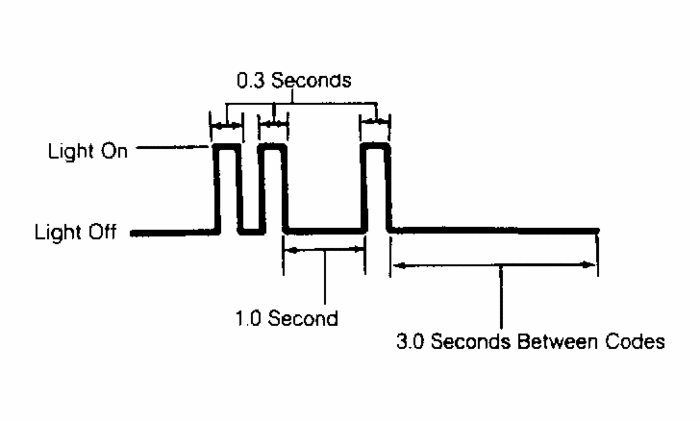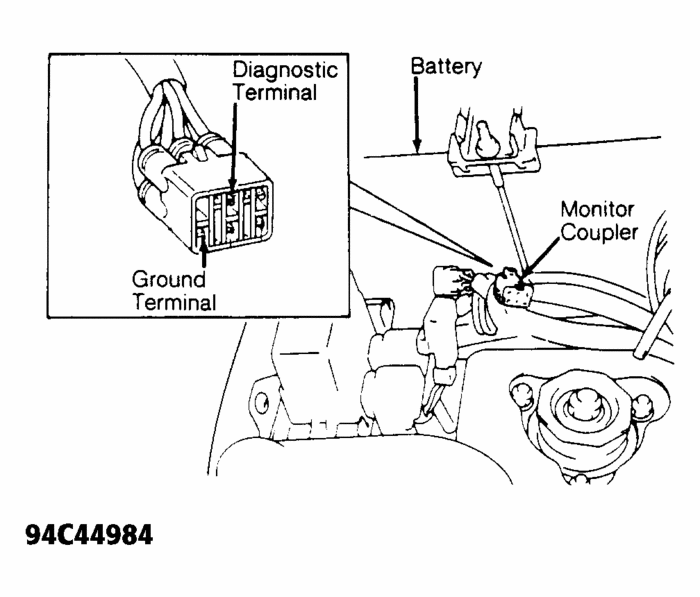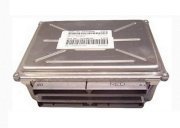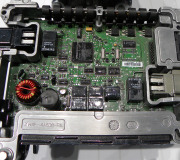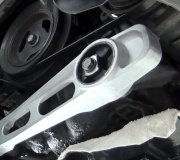SELF-DIAGNOSTIC SYSTEM
HARD FAILURES
Hard failures cause Malfunction Indicator Light (MIL) to illuminate and remain on until problem is repaired. If MIL comes on and remains on (light may flash) during vehicle operation, cause of malfunction must be determined using diagnostic (code) charts. If a sensor fails, Electronic Control Module (ECM) will use a substitute value in its calculations to continue engine operation. In this condition, commonly known as limp-in mode, the vehicle runs but driveability will not be optimum.
INTERMITTENT FAILURES
Intermittent failures may cause Malfunction Indicator Light (MIL) to flicker or illuminate and go out after the intermittent fault goes away. Intermittent faults will store trouble code(s) in ECM memory until power is disconnected from ECM for at least 20 seconds, with the exception of idle switch failure and ignition faults, which are erased each time ignition switch is turned off. Intermittent failures may be caused by sensor, connector or wiring related problems. See INTERMITTENTS in TESTS W/O CODES article in the ENGINE PERFORMANCE section.
MALFUNCTION INDICATOR LIGHT (MIL) RESET PROCEDURE
Federal Models
MIL (also known as CHECK ENGINE light) will automatically flash at 50,000, 80,000 and 100,000 mile intervals, indicating system inspection and/or system component replacement is required. After necessary services have been performed, turn off light by moving cancel switch to opposite position. Cancel switch is located below steering column lower trim panel:
At 50,000 Miles - Replace PCV valve and inspect EGR system.
At 80,000 Miles - Replace oxygen sensor.
At 100,000 Miles - Replace PCV valve and charcoal canister.
Inspect catalytic converter for plugging, EGR system, ECM and related sensors.
RETRIEVING CODES
Fig. 1: Typical Code Display (Code 21 Is Shown)
Courtesy of SUZUKI OF AMERICA CORP.
Ensure Malfunction Indicator Light (MIL) (also known as CHECK ENGINE light) comes on when ignition is on and engine is not running. When engine is started, light should go off. If light remains on while engine is running, a trouble code is present.
If light does not come on with key on and engine off, check MIL circuit before continuing. See CHART A-1 and CHART A-2 under CODE CHARTS for MIL diagnosis. If light operates and a no start condition exists, see CHART A-3 under CODE CHARTS.
To retrieve codes, locate monitor coupler connector, near battery. Using a jumper wire, connect diagnostic terminal to ground terminal. See Fig. 2.
Fig. 2: Identifying Diagnostic Terminals
Courtesy of SUZUKI OF AMERICA CORP.
For example, Code 21 is identified by a flash, flash, pause and flash. See Fig. 1. Each code is displayed 3 times, and then the next code is flashed.
If engine control system is operating properly (with no faults), a Code 12 should exist with ignition on and engine off. This indicates diagnostic system is capable of storing codes. Ensure engine is in sound mechanical condition.
Once all codes are displayed, record codes and proceed to CODE CHARTS for repair procedure. Remove jumper wire from diagnostic terminal.
After repairs, erase codes by disconnecting battery cable for 60 seconds. Repeat code retrieval procedure to check for new or returning trouble codes.
CLEARING CODES
CAUTION:Ensure ignition is off when disconnecting or reconnecting power supply for ECM.
After repairs are performed, clear ECM memory of all stored trouble codes. To clear memory, turn ignition off. Disconnect negative battery cable for at least 60 seconds.
ECM LOCATION
ECM LOCATION
ModelLocation
SidekickUpper Left Corner Of Instrument Panel
Images (Click to make bigger)
SPONSORED LINKS
Friday, November 26th, 2010 AT 5:57 AM
